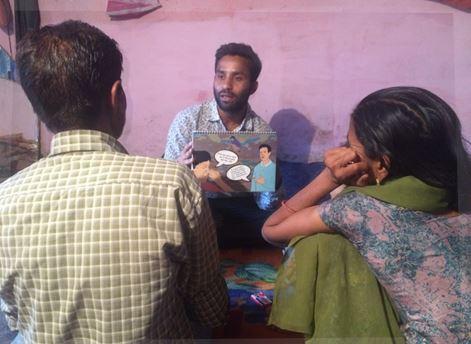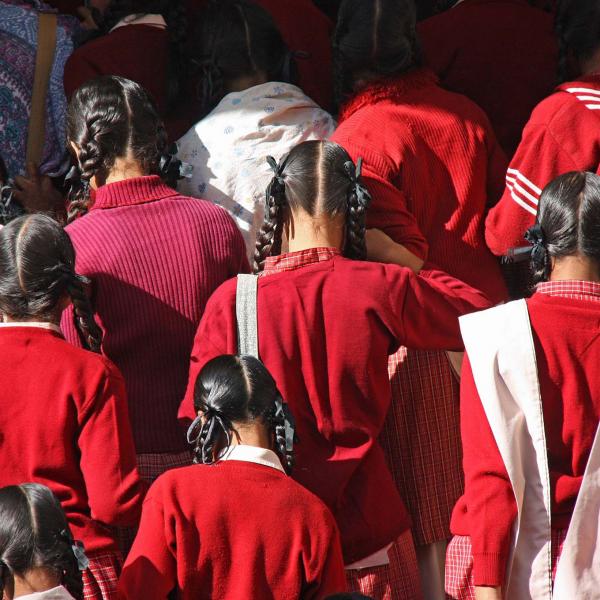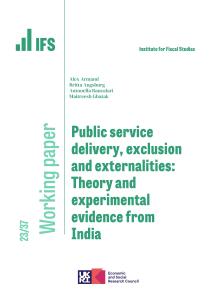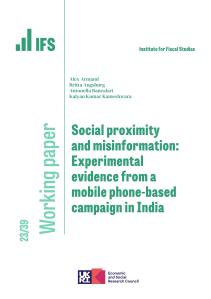Yesterday was World Toilet Day, promoted by the UN. They warn that “we are turning our environment into an open sewer” because 6 in 10 people worldwide don’t have access to a safe toilet. This threatens the health of young children, particularly in densely populated areas, such as slums. The UN has made access to and use of a safe toilet by everyone its sixth Sustainable Development Goal. Many low- and middle-income countries are taking major steps to make sure this is true by 2030, the target date for achieving the development goals.
Introducing community toilets could improve the sanitation environment of these areas. These toilets are typically located in or near a specific community area and used by a defined group of local residents. But simply building them doesn’t change people’s behaviour. In India, where community toilets have been widely built in slums as part of an ambitious Clean India Movement, half of those without a toilet in their home defecated in the open in 2010 – a staggering 122 million households.
Why don’t people use community toilets?
People typically have to pay to use community toilets. This is likely to exclude many people, especially the poorest of the poor, from using them. Yet, even people who can afford paying the fee may not use them because their willingness to pay is low. Our research with people living in slums in India confirms this.
Defecating in the open is particularly costly for women because it exposes them to sexual assaults, and so they may value toilets more highly than men. Yet, the cost of using community toilets may also be particularly high for them because women often have lower bargaining power within poor Indian households, and so needing to seek money repeatedly to use the community toilets is likely to impact how often they go.
IFS researchers examined the willingness to pay of both men and women from almost 1,500 households in slums in India running a lab-in-the-field experiment. We removed financial constraints - finding out how much people were willing to pay by letting them choose between free tickets to access community toilet or a cash payment. We prevented bargaining issues by doing this separately for men and women.
Even in these conditions, both men and women have a low willingness to pay. On average, men are willing to pay 1.45 Rupees (around 2p) each time they use a community toilet - much lower than the current market price of 5 Rupees. Women are willing to pay even less - 1.33 Rupees (around 1p) per visit, meaning that they don’t actually value community toilets more highly than men.
Interestingly, men and women reported that they are willing to pay more than double for community toilets that have been improved to the highest standard — very clean, with good handwashing facilities and well lit, locked cubicles. Both women and men reported that they are, on average, willing to pay above the market price of 5 Rupees if the quality of community toilets was improved.
Figure 1: Willingness to pay to use the closest community toilet
Source: Baseline survey of 1,500 households located in slums of Lucknow and Kanpur, Uttar Pradesh, India. WTP at existing standard is elicited by providing a choice between a bundle of ten free tickets to use the community toilets, or an amount of Rupees in cash ranging from 0 to 60 Rs (i.e. a price of 0 to 6 Rs per ticket). WTP at highest standard offers the same choice, but no outcome is paid (non-incentivised methodology).
These findings suggest that the average person living in a slum in India is not willing to pay the market price to use community toilets in their current state. This is in line with other findings, which show that the quality of toilets affects how often people use them and how much they are willing to pay to do so. A systematic review found that better maintenance, cleanliness, newer toilets and better hygiene were all positively associated with higher use of shared toilets.
How can we persuade people in India’s slums to use community toilets?
The problem for policymakers is that people can have substantial biases in the preferences they express about toilets, so they’re often not a good basis for policy decisions. Most research agrees that providing information to people improves their perception of sanitation, water and hygiene and helps them change their behaviour. Several studies have found this kind of intervention encourages people, for example, to build private toilets (See Gertler et al. 2015, Van Minh et al. 2013 and Pickering et al. 2015).
But we need rigorous evidence on what makes the difference when persuading people to use community toilets rather than defecating in the open. Is it just that facilities have improved, or is it that people have more information about why they should use them?
Researchers at the IFS, in collaboration with Morsel India and FINISH Society and with funding from 3ie, are using state-of-the-art techniques to look closer at how much people in slums would be willing to pay to use community toilets. The research covers 110 slums in Lucknow and Kanpur, two overcrowded cities in Uttar Pradesh, the most populous state in India. We are examining two scenarios: one where the condition of community toilets is improved and another where improvements are made alongside an information campaign. Here, the people using community toilets are given information about the negative effects of open defecation, the benefits of using community toilets and other sanitation, their rights when paying for such services and duties when using them.

Our study is based on the rationale that everyone needs to join in with providing safe toilets. The public, non-profit and private sectors all have a role to play in helping India meet its Clean India goals and to contribute towards the global achievement of the sixth Sustainable Development Goal. Researchers at IFS are working on several impact evaluation studies on sanitation in India that are designed to extend available evidence and ultimately to reduce open defecation in India.











